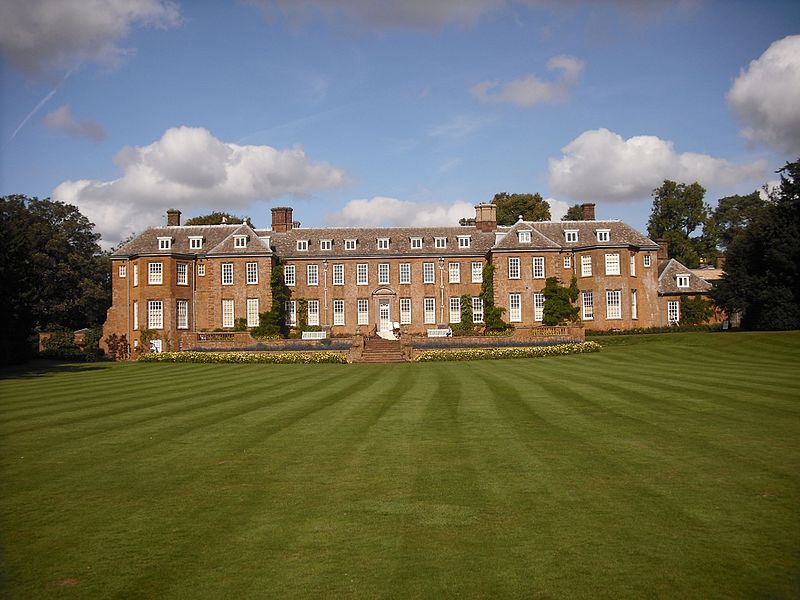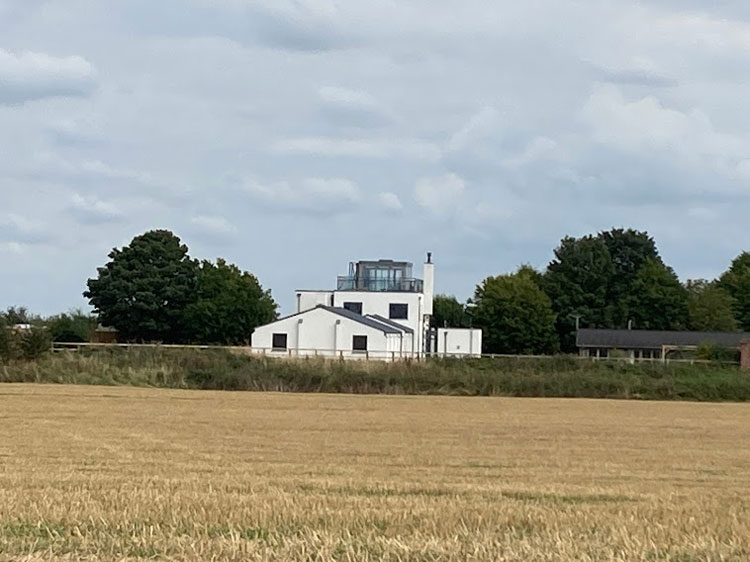Upton House and Shenington Airfield in Wartime
Almost certainly most members of WIAS will have visited Upton House, the National Trust property situated on Edge Hill just in Warwickshire. Apart from its superb location and terraced gardens, Upton House contains a priceless collection of art treasures, including pictures by old masters and fine examples of English and continental porcelains.
Upton House was purchased in 1927 by Walter Horace Samuel MC, 2nd Viscount Bearsted, and between its acquisition date and 1929 considerable remodelling of the original 17th century house was carried out by the architect Percy Morley Horder. These changes permitted Lord Bearsted to exhibit his art collection to maximum advantage.

As well as his own private collections Lord Bearsted took an active interest in the wider fine art scene, becoming in1936 the chairman of the trustees of the National Gallery. In 1938 he became a member of the trustees of the Tate Gallery and from 1944 chairman of the Whitechapel Art Gallery. Therefore, undoubtedly Lord Bearsted would have formed close associations with people of some standing in the fine art world. These contacts were to prove quite useful in the future.
Left – Upton House, (Photo – Martinevans123, Public domain, via Wikimedia Commons)
Shenington is a village in Oxfordshire approximately two miles to the South of Upton House. It was here on the Edgehill plateau that the construction of a military airfield was begun, probably during 1940. Initially Shenington was just a rudimentary landing ground, but it was soon developed into the standard military pattern airfield, with one runway of 1,600 yards and two of 1,300 yards. Although Shenington officially opened on 21st October 1941, flights had actually commenced in August of that year. The airfield initially was a satellite for Moreton – in – Marsh 21 OTU (Operational Training Unit).
Lord Bearsted is said to have become increasingly concerned by these developments on his doorstep, possibly thinking that Upton House and its treasures could inadvertently become collateral targets for enemy aircraft bent on attacking Shenington airfield. Therefore he wrote to Kenneth Clark, Director of the National Gallery, seeking permission for his pictures to be safely closeted with those of the National Gallery Collections, which had been already been interred at Manod Slate Quarry, in North Wales. Clark agreed, and the Upton pictures were delivered to Manod on the 7th November 1941. It said that whilst at Manod the Upton pictures resided alongside the Royal Collection!
We do not know when the pictures were actually despatched from Upton House, but presumably this was only a day or so before their receipt at the Manod Slate Quarry. Before transit to Manod the pictures must have been specially crated for the journey; whether this was done at Upton House or elsewhere is another question to which we do not know the answer.

From the foregoing it can be seen that the Bearsted art collection left Upton House approximately three months after the first use of Shenington airfield by the RAF. This was probably an uneasy time for Lord Bearsted. However, the pictures departed well before the experimental Gloster-Whittle E28/ 9 Pioneer (W4041/ G) jet aircraft started to use Shenington in either January or February 1942 – different sources give different dates for this key event. The reason for the selection of Shenington for jet flying was that it was fairly secluded and approximately half-way between Gloster Aircraft at Brockworth and Power Jets Ltd at Lutterworth.
Right – Gloster-Whittle E.28/39, W4041/G. (Photo – Flight Lieutenant Stanley Devon, Royal Air Force Official Photographer. Public domain, via Wikimedia Commons)
Both Gloster -Whittle E28/39s (W4041/G and W4046/G) used Shenington airfield at different times, and being highly secret aircraft it is inconceivable that Lord Bearsted, or anyone else for that matter not in the “need to know” loop, was advised in advance of jet flying at Shenington. The aircraft were respectively code named “Tourist 1” and “Tourist 2” whilst at Shenington. Lord Bearsted during WWII was employed in secret military work, but the author doubts whether he was informed about anything relating to jet propelled flight.
There has also been a suggestion that some of the civil population of Shenington were removed from the area on the grounds of secrecy to accommodate jet flying at the airfield. This also seems very unlikely, and the author can find no documentary evidence to support this hypothesis. In fact the number of people actually occupying Upton House itself probably increased significantly, as key staff from Samuel’s Merchant Bank in the City were relocated there to avoid the London Blitz. It is highly likely, therefore, that Samuel’s staff witnessed early jet propelled flights from Shenington during the war years. For a more detailed analysis of the jet flights made at Shenington please see the author’s, “The Gloster-Whittle E28/39 Pioneers” on the WIAS website.
The 2nd Viscount Lord Bearsted upon his death in 1948 bequeathed Upton House and its grounds, together with his art treasures, to the National Trust for everyone to enjoy. Additionally, being a great philanthropist, he endowed many other organisations with his generosity.
The author would like to thank Peter Bolton for prompting this short paper and also the National Trust Staff at Upton House for their kind assistance in relation to Lord Bearsted’s art collection during wartime.
Copyright © JF Willock, May 2021
References:
- Upton House, National Trust Guide, 1974 Edition
- Action Stations, Vol.6, Military Airfields of the Cotswolds and the Central Midlands, Michael JF Bowyer, Patrick Stephens Limited, 1990 Edition
- The Gloster-Whittle E28/39 Pioneers, JF Willock, WIAS website 2021

